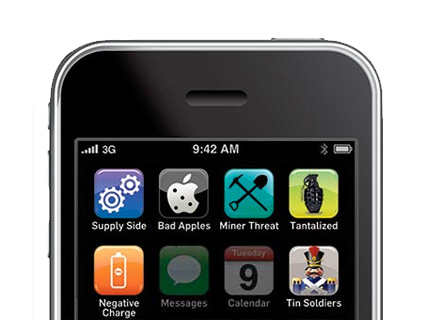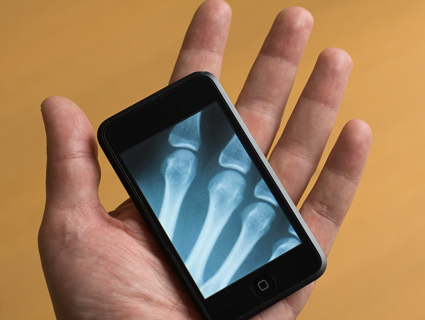
<a href="http://www.flickr.com/photos/36266791@N00/2986303105/" target="_blank">Andreas Schaefer</a>/Flickr
Greetings from Malaysia! I’m here working on a reporting project about 17 elements at the bottom of the periodic table known as the rare earths, which are key to manufacturing all kinds of cutting-edge technology—from smartphones and laptops to wind turbines and hybrid-car motors to defense technology, including tank engines, radar and sonar systems, and navigation systems in smart bombs. For the last few decades, China controlled the world’s market for rare earths, producing about 97 percent of the global supply. But in late 2010, China cut its exports by 35 percent to keep the valuable metals for its own manufacturers. The prices of rare earths shot up, and almost immediately mining outfits in other countries began cropping up.
One of the biggest to come on the scene is Lynas, an Australian company. Although the company will mine its materials in Australia, it hopes to build its refinery in Malaysia. It was granted a temporary license to operate last month; the company says that once it is up and running, it will be able to supply a fifth of the world’s rare earths. If all goes according to plan, Lynas rare earths could soon be found in flat-screen televisions at your neighborhood Best Buy and Priuses at your local car dealership.
Since rare earths occur naturally with the radioactive elements thorium and uranium, safety is a major concern with using them. Engineers have expressed reservations about the safety of the Lynas refinery’s design, as the New York Times has reported. Some Malaysians suspect that Lynas is choosing to refine in Malaysia in order to sidestep more stringent environmental regulations at home.
I’ve been traveling around with Lee Tan, an unflappable environmental consultant who grew up in Kuantan and now lives in Australia. This year, Lee has spent most of her spare time working to stop the refinery from opening. “My mom lives in Kuantan, and my brothers and sisters were thinking about retiring there,” she says. “Now, they’re not so sure.”
You can’t blame them for their concerns: Malaysia has hosted a rare-earth refinery before, with some painful results. From 1979-92, the Japanese company Mitsubishi ran a plant called Asia Rare Earth, where it processed the materials it needed to sell electronics to markets all over the world. In the years since, nearby villagers have seen birth defects and eight cases of childhood leukemia. Mitsubishi is still dealing with the mess; the New York Times called it “the largest radiation cleanup yet in the rare earth industry.”
I wanted to see the shuttered refinery for myself, so a few days ago, Lee and I boarded a train in Kuala Lumpur, Malaysia’s noisy, frenetic capital, and traveled two hours north to Ipoh, a laid-back city known for its excellent Chinese food. (If you ever find yourself there, do yourself a favor and try a big plate of rice noodles with curry sauce and a glass of sweet iced white coffee.) From Ipoh, a local businessman named Low Tioong Hai drove us a few miles outside to a sleepy little suburb called Bukit Merah to find the site of the Asia Rare Earths refinery.
I’m not sure what I was expecting to see—maybe some creepy factory ruins or at least a few “No Trespassing” signs. Instead, we found a very normal looking field. No one really even seemed to care when we got out of the car and walked right up, except this guy in a neighboring lot: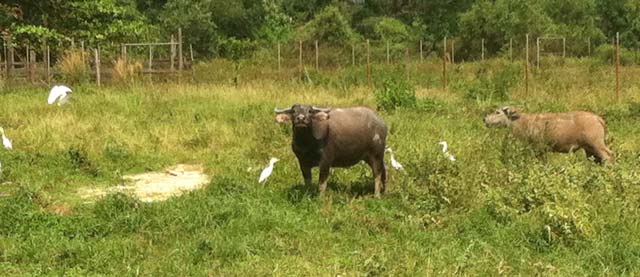 I got back in the car, feeling a little discouraged. If the former plant site looked this ordinary, maybe everyone in Bukit Merah had moved on—after all, it had been two decades since the plant closed. I asked Low whether people had forgotten. He raised his eyebrows. “How could they, la?” (Malaysians often use “la” at the end of sentences to give their point an extra bit of oomph.) As we talked to local people over the next few days, I began to see what he meant.
I got back in the car, feeling a little discouraged. If the former plant site looked this ordinary, maybe everyone in Bukit Merah had moved on—after all, it had been two decades since the plant closed. I asked Low whether people had forgotten. He raised his eyebrows. “How could they, la?” (Malaysians often use “la” at the end of sentences to give their point an extra bit of oomph.) As we talked to local people over the next few days, I began to see what he meant.
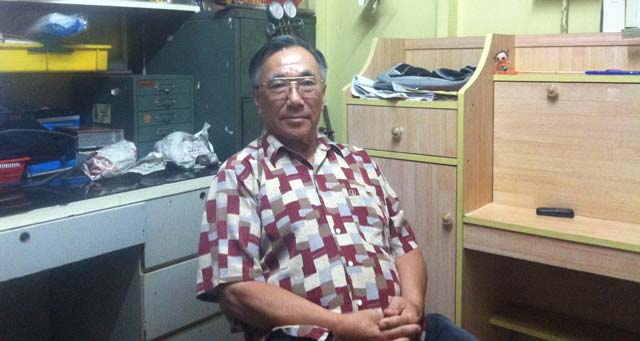
We paid a visit to this man—a butcher named Hew Yun Tat—at his small, airy house in Bukit Merah. In the living room, his daughter was tying bits of leather, some work she takes in from the local shoe factory. Two little kids darted in and out of the room where we sat. We could hear the clinking of mah-jongg tiles outside. Hew’s English wasn’t great, so Lee, who speaks fluent English, Malay, and seemingly every Chinese dialect we encounter, asked him to tell us the story of the refinery. He sighed. “At first, the plant seemed like a great idea,” he said. “Ever since the old tin mines had begun to close, there wasn’t enough work to go around, and the refinery paid really well. But then we started having problems.” He said he would show us what he meant.
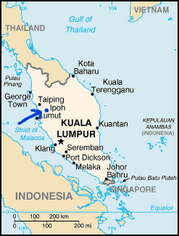 Map by Wikimedia CommonsWe got into Hew’s car to go see the owner of a local Esso station, a guy in his late 60s who had run a company that contracted with Asia Rare Earth to truck the waste away from the plant. (He didn’t want me to use his real name or take his picture, so I’ll call him Esso Man.) We were all wilting in the midday sun, so we sat down at a bustling open-air cafe, and ordered giant shaved-ice desserts that included ice cream, several kinds of chopped up Jell-O, and red beans. Esso Man told us in animated Mandarin about trucking the waste. “When I got the job, I couldn’t believe my luck,” he said. Asia Rare Earth paid three times as much as his usual gigs. The plant officials never specified where or how he and his three drivers should dump the waste. They were paid by the load, so the quicker the trip, the more money they earned. “Sometimes they would tell us it was fertilizer, so we would take it to local farms. My uncle was a vegetable farmer, so I gave some to him.” Other times, the refinery officials said it was quicklime, so one driver painted his house with it. “He thought it was great, because it made all the mosquitoes and mice stay away.”
Map by Wikimedia CommonsWe got into Hew’s car to go see the owner of a local Esso station, a guy in his late 60s who had run a company that contracted with Asia Rare Earth to truck the waste away from the plant. (He didn’t want me to use his real name or take his picture, so I’ll call him Esso Man.) We were all wilting in the midday sun, so we sat down at a bustling open-air cafe, and ordered giant shaved-ice desserts that included ice cream, several kinds of chopped up Jell-O, and red beans. Esso Man told us in animated Mandarin about trucking the waste. “When I got the job, I couldn’t believe my luck,” he said. Asia Rare Earth paid three times as much as his usual gigs. The plant officials never specified where or how he and his three drivers should dump the waste. They were paid by the load, so the quicker the trip, the more money they earned. “Sometimes they would tell us it was fertilizer, so we would take it to local farms. My uncle was a vegetable farmer, so I gave some to him.” Other times, the refinery officials said it was quicklime, so one driver painted his house with it. “He thought it was great, because it made all the mosquitoes and mice stay away.”
But after a few years, people began to suspect that the waste from the plant wasn’t fertilizer or quicklime. Bukit Merah residents got wind of protests in the neighboring town of Papan where Asia Rare Earths planned to build its dump. “We had no idea what radioactive waste was, but we taught ourselves about it,” Hew said. “When we learned, we were really angry that we had been exposed to this stuff.” Hew and a few others staged protests. In 1987, the government threw Hew in jail for two months. When he got out, he continued to protest. It wasn’t until five years later that the high court finally closed the plant. “But the damage had already been done,” he said.
Next, Hew took us to the nearby home of Lai Kwan, a 69-year-old woman who worked as a contracted construction laborer at the plant while she was pregnant. She heard rumors around the plant that the materials it refined were dangerous, so she quit, worried about her pregnancy. But a few months later, her son, now 30, was born profoundly retarded and blind. He requires full-time care, so Lai Kwan hasn’t been able to work. She worries about what will happen to him when she can’t care for him anymore. “It’s getting harder now,” she said. “He’s heavy, and I have arthritis.” A few months ago, a local politician visited and promised to help. A local newspaper covered the story. But the politician hasn’t followed up. “Every time I call she says she is too busy,” she said, pointing to the picture of the politician and her son in the local newspaper.
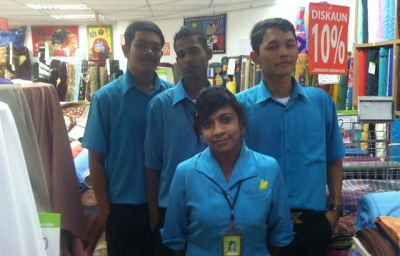 Rela, 24, whose mother walked through Asia Rare Earth’s ground’s during her pregnancyWhen we left Lai Kwan’s house, Hew wanted to to introduce us to Rela (I changed her name at her request), a young woman from the local Tamil community. Hew explained that Rela’s mother walked through the refinery grounds every day on her way to work while she was pregnant with Rela, and as a result, he said Rela has always had health problems. We finally tracked her down in the downtown Ipoh fabric store where she works. A petite 24-year-old, Rela is shy and giggles easily. Her coworkers, a trio of guys who seemed to have appointed themselves her bodyguards, stuck around to help translate. “I was in the hospital for 20 days as a baby,” she said. “I get very bad headaches, and I cough up blood.” She didn’t know the name for her condition, but later, I called her physician, Dr. Jayabalan, who said she suffers from multiple congenital defects. “Her case isn’t the worst, though,” he said. He also treated the eight Bukit Merah children who developed leukemia, seven of whom have died.
Rela, 24, whose mother walked through Asia Rare Earth’s ground’s during her pregnancyWhen we left Lai Kwan’s house, Hew wanted to to introduce us to Rela (I changed her name at her request), a young woman from the local Tamil community. Hew explained that Rela’s mother walked through the refinery grounds every day on her way to work while she was pregnant with Rela, and as a result, he said Rela has always had health problems. We finally tracked her down in the downtown Ipoh fabric store where she works. A petite 24-year-old, Rela is shy and giggles easily. Her coworkers, a trio of guys who seemed to have appointed themselves her bodyguards, stuck around to help translate. “I was in the hospital for 20 days as a baby,” she said. “I get very bad headaches, and I cough up blood.” She didn’t know the name for her condition, but later, I called her physician, Dr. Jayabalan, who said she suffers from multiple congenital defects. “Her case isn’t the worst, though,” he said. He also treated the eight Bukit Merah children who developed leukemia, seven of whom have died.
Then there’s Esso Man’s drivers. All three died relatively young—not one lived past his fifties. Now, Esso Man suffers from a skin condition that causes white patches on his hands. Sometimes he thinks it might be related to his exposure to the waste, but, he says, it might just be stress. “I feel regret about working for that company,” he says. “I feel bad that I gave people all that toxic waste. Even my own uncle.”
We talked to a handful of other people, all of whom told us about friends who they said had developed health problems in the wake of the plant. We also visited the tiny nearby town of Papan, which basically consists of a few weathered houses, a mah-jongg parlor, and a handful of very cute old people, most of whom have kids who have long since moved away. Behind Papan, nestled in the rolling hills of the Kledang mountain range, is the final resting place for Asia Rare Earth’s radioactive materials. In 2010, 28 years after the plant closed, Malaysian news media reported the discovery that the holding bins where the thorium was being stored were unsafe. Now Mitsubishi is building a new facility. “I am worried about the dump,” said one 86-year-old widow we talked to on the town’s main drag. But she doesn’t want to leave, having lived in Papan her whole life. “I want to die here,” she said.
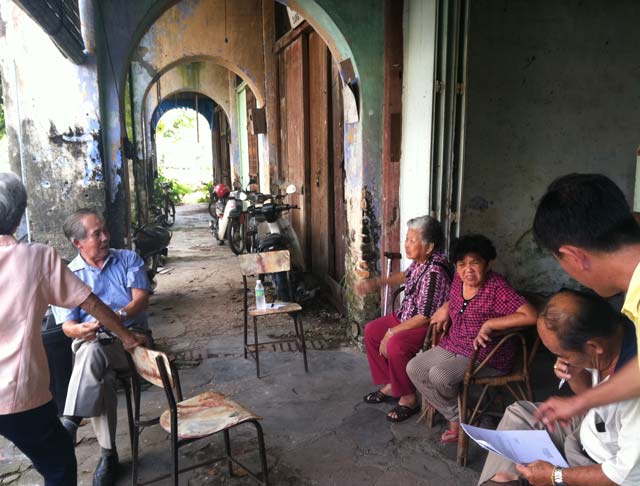 Papan, the village nearest to Asia Rare Earth’s dump
Papan, the village nearest to Asia Rare Earth’s dump
I asked Hew whether the government could help the people that we had met. He told me that since there has never been an epidemiological study of the area, no one can technically prove that Asia Rare Earth’s refinery caused the health problems. Even so, in its FAQ, Lynas makes a point of saying that its new rare-earth refinery will be “completely different to the Bukit Merah rare earths plant” and that “there are now much higher standards in place which mean Bukit Merah could never be repeated.”
Still, part of Lynas’ plan is to treat its waste—and then recycle the nonradioactive parts into building materials. Not everyone is convinced that the company will be able to make its waste completely free of radiation, or that it will be able to protect its workers from exposure during the refinery process. “I don’t think this is realistic,” said Chee Hong Lee, a Kuala-Lumpur-based chemical engineer who has been studying Lynas’ plans.
I’ve been spending the last few days talking to others about the new plant, and I’ll write more about that in my next dispatch. Stay tuned.
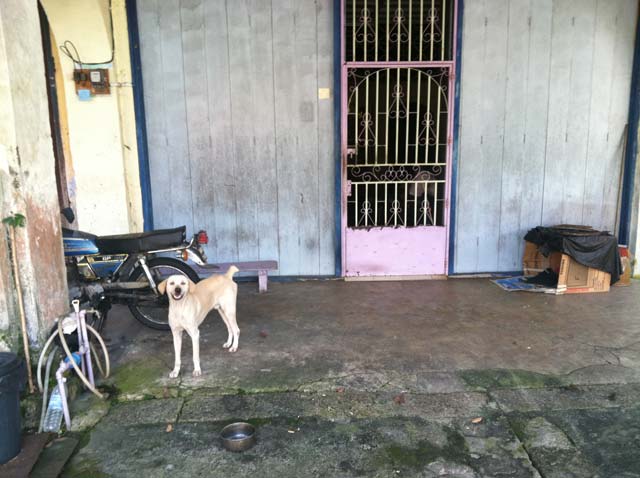 A new friend I made in Papan
A new friend I made in Papan
Reporting for this story was partially funded by a grant from the Society of Environmental Journalists.

